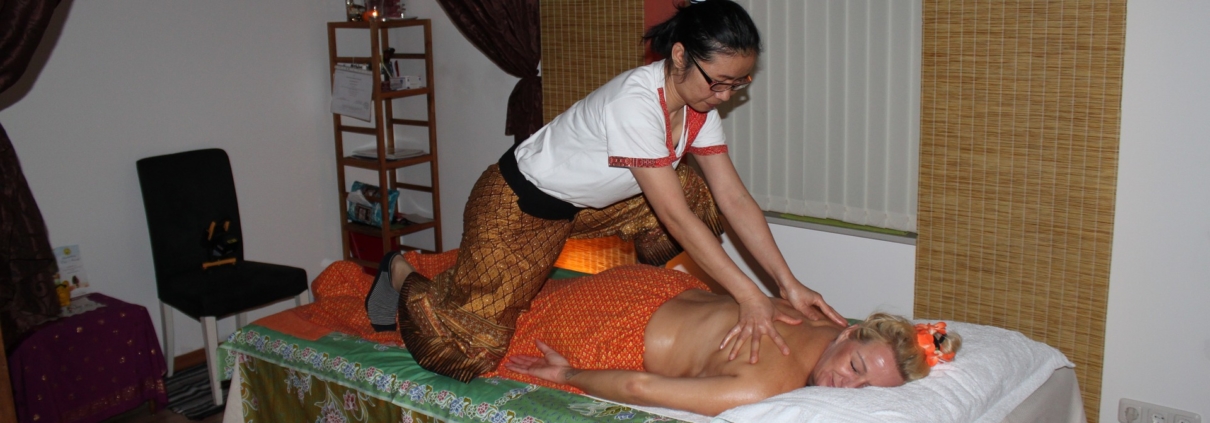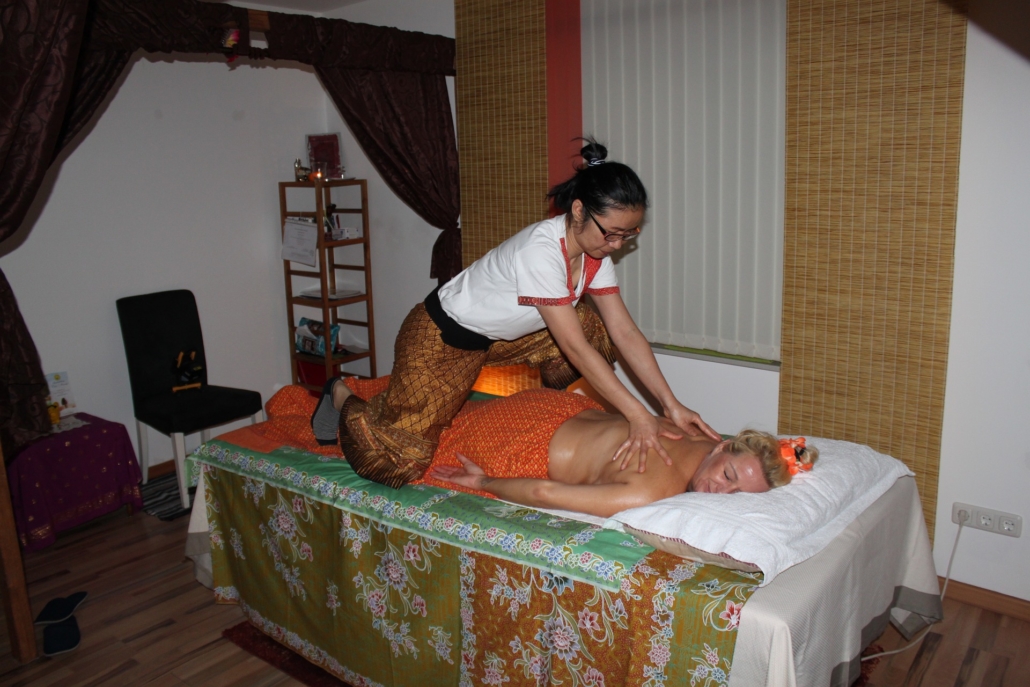Thai Yoga Massage – The Ultimate Guide To (2020)
Are you feeling stressed, tense, or lacking energy? A Thai Yoga Massage may be the solution you need to regain your health condition and vitality. Often referred to as Thai yoga massage, the practice started in Thailand over 2500 years ago and is regarded as part of Traditional Thai Medicine. It appears to borrow heavily from Indian, Chinese, and Buddist traditional practices.
This type of massage involves the use of stretching techniques and the gentle application of pressure to relax and heal the whole body. It embodies aspects of acupressure, energy work, and yoga traditions. Aside from relieving stress, pressure, and revitalizing the body with energy, this type of massage is known to be effective in treating physical injuries and is particularly popular with athletes worldwide.
So what is a Thai Massage?
In the 1980s, Thai Massage started gaining popularity in the west. The growth came as a result of the increased number of tourists visiting Thailand and the desire to experience alternative medicine and therapies from Southeast Asia.
Thai Massage specifically targets Sen or energy channels(conduits) believed to live in one’s body. In Thai Yoga Massage, it’s believed that there are over 72,000 sen, but only 10 of them are considered essential.
In a Thai Massage, a masseuse starts by applying acupressure using his or her palm, thumb, forearm, elbows, knees, or feet. Moreover, Thai Massage also includes yoga-like stretching techniques, where the masseuse stretches the client by using hands, arms, knees, and feet.
The trained therapist puts a client through a sequence of stretches that cover your entire body. One required to wear loose-fitting clothing and lie on a floor mat. The therapist’s role is to help the client perform various stretches targeting parts of the body, such as legs, thighs, chest, back, and more.
Besides, this technique also includes applying pressure on various parts of the body to activate Sen or the body’s energy pathways. And just like yoga, correct breathing practices are emphasized and help bring out the desired results.
Thai Massage comes in several variations. The ‘northern style” is gentler and slower, while the “southern style” is intense and faster. However, these two styles aren’t recognized in Thailand.
The recognized variation in Thailand is the “royal” Massage meant for royalty and the “commoner” massage practiced by ordinary people. The royal Massage has less physical contact, as it does not include stretching, and the feet are not used.
On the other hand, the “commoner” variation promotes more physical contact, styles, techniques, and stretching. The majority of Thai Massage schools teach a blend of the two methods.
In a nutshell, Just like yoga, a Thai Yoga Journey must be experienced to understand it. Words are hard to find to encapsulate the journey you undertake during a 3-4 hour Thai yoga bodywork session. It’s easy to say it’s applied yoga. It’s easy to say it’s lazy man’s yoga.
But what I mean by a Thai Yoga Journey is a mind-blowing, body rocking, eye-opening exploration of yourself through your physical, energetic, emotional, wisdom and bliss body. It’s true I hold the weight of the practice, and from the outside, it can look as though you are napping.
But on the inside, you are dissecting your memories for truths, listening to your teachers, and hearing your ancestors’ heartbeat. You face your fears, and you meet your past. You see your future, and you feel your beauty.
This is not an ordinary experience and it does not end when the session is over. You will be high on love for days. Your thoughts will grow in clarity. You will feel better. You will move with more ease. You will know what I mean by Thai Yoga Journey. And you will love it. We promise.
Thai Massage Vs. Regular Massage
If you’re one of the people wondering about the differences between Thai Massage and a regular massage, you are not alone. Most people confuse the two massages despite their obvious and glaring differences. The first noticeable difference is that Thai Massage is performed on the floor mat, while the latter uses a massage table or bed.
With Thai Massage, an individual has a larger surface area to move freely and experience a range of motions. You can not say the same thing about the regular massage, where a person lies passively on a bed as a masseuse attends him or her. Also, in Thai massage, the therapist uses fists, forearms, elbows, legs, hips, shoulders, and feet. Standard message, on the other hand, uses only fist, forearms, and elbows.
Health benefits of Thai massage
Thai Massage has plenty of health benefits. Consider the following benefits if you are still on the fence whether to sign up for a session or not.
Reduce stress
At its core, Thai massage works by manoeuvring the body, to release physical and emotional tension. While having stress is not necessarily bad, too much stress can cause depression or severe cardiovascular diseases—and this is where Thai Massage comes in.
By applying gentle pressure and using various stretching techniques, it is possible to relax your body and avoid stress. In a 2015 study, researchers found that Thai massage was more effective in reducing stress than resting. So if you’re under immense strain, don’t let it ruin your life, get a Thai massage and regain your life back.
Promotes positive emotions
Thai massage promotes mindful relaxation, leading to the release of pent-up energy or negative emotions. During a Thai Massage, you’ll start to let go of negative thoughts as cortisol levels decrease and serotonin(the feel-good hormone) increases. As a result, stress and tension dissipate, leaving you feeling refreshed and happy.
Enhance energy
Various research studies already show that Thai Massage can increase a person’s energy levels. A recent study conducted on individuals with fatigue showed the effectiveness of Thai massage in enhancing a person’s energy levels and mental stimulation. In the same survey, traditional massage only made participants relax and sleep.
Thai massage works on the concept of energy pathways, commonly referred to as Sen. It’s believed that the body hosts various energy channels, or Sen. Sen is aligned with different parts of your body the muscles, bones, nerve, and blood. Some Sen also corresponds with the mind and consciousness.
When tight muscles block Sen, such blockages mean the flow of life energy is reduced, which causes pain, stiffness, and illness. Thai Massage uses different stretching techniques to unblock stiff muscles and cause full energy to flow back again.
Alleviate headaches
Thai Massage is also known to cure headaches. Applying pressure on targeted parts of the body makes it possible to cure patients suffering from chronic headaches. By reducing tissue hardness, Thai Massage reduces chronic headaches and pain in parts of your body. However, if you’re suffering from headaches, it is vital to get evaluated by a doctor, especially if Thai Massage does not ease your pain.
Reduce Back Pain
Thai massage is an effective non-pharmaceutical remedy for treating back pain. According to several research studies in Thailand, It’s been established that Thai Massage does alleviate back pain symptoms. Based on the research conducted on over 120 participants, the results were crystal clear that Thai Massage was effective in treating all forms of back pain.
Relieves joint hardness and pain
Thai massage has been established to be effective in easing joint stiffness. In one study, multiple people with knee arthritis went through a Thai Massage program combined with exercise for eight weeks. The results were impressive as all the participants felt better and walked with ease at the end of the program.
In another study, over 60 patients with Osteoarthritis went through a Thai Massage program for 3 weeks and came out feeling less pain at the end of the program.
Stimulates blood circulation
Thai massage is known to improve the circulation of blood via the use of light stretches. These stretches increase the flow of blood, which ends up increasing oxygen in body tissues. These actions promote a healthy heart and cell growth. A study conducted recently found out the benefits of Thai foot massage in alleviating peripheral neuropathy, which affects a person’s balance.
Improves Flexibility
Thai massage uses similar stretches to yoga, which reduces stress and increases blood circulation. Over time, gradual stretching can increase a person’s flexibility and range of motion. The massage also enhances the flow of synovial fluid in the joints, which is known to alleviate friction between bones. All these actions can improve the mobility of a person as well as a range of motion.
As a result, Thai massage has increasingly become popular with athletes suffering from pain in the muscles or joints. As you may know, athletes tend to be prone to muscle injuries or bones due to their day-to-day activities. With Thai massage, many athletes have found a solution to their never-ending physical problems. That’s why you see many sports organizations employing and working with specialized massage therapists.
Mental & Spiritual Clearness
Thai massage is known to increase mental clarity and spirituality. For example, during a Thai Massage session, a client will start asking more in-depth questions about the meaning of life, question morals, values, and concepts about themselves and the general society. Additionally, this is also a time where a person seeks spiritual truth and clearness.
Improves immunity
Improved blood circulation goes a long way in helping the body get rid of toxins. This can help boost a person’s immunity, which is critical in fighting diseases. If you’re searching for a method to increase resistance without partaking vitamin supplements, then Thai Massage is a reliable option.
Promote deeper breathing
Thai Massage also includes passive stretching and breathing techniques, which helps the body to relax. Essentially, elongating your breath sends signals to the nervous system that it’s alright to relax or chill out. Aside from relaxing the body, deep breath also increases mindfulness.
Alleviate diseases
The main advantage of having a Thai massage is to rebalance your body’s energy. However, researchers have also found Thai massage to be highly beneficial in alleviating diseases that include: asthma, heart disease, bronchitis, angina, nasal obstruction, shock, various mental disorders, schizophrenia, hysteria, nausea, eye problems, throat problems, irregular menstruation manic depression, appendicitis, deafness, frequent urination, impotence, uterine bleeding, facial paralysis, diarrhoea and hypothermia.
What to expect from a Thai massage
Unlike regular massage, Thai massage is performed with a client fully dressed, though the clothing has to be loose and comfortable to allow stretching. With this kind of massage, no lotion or oils are employed, and the entire session is done on the floor. Of course, mats, pillows, and other props can be used to make the client comfortable. Plus, the use of blankets and duvets to make the client warm.
Usually, standard Thai yoga massage lasts between 1-2 hours. When performed according to plan, A Thai massage has transformative quality on the body and mind; it can enhance intuition, spiritual focus, and mindfulness.
The type of sequence used in Thai massage varies from one practitioner to the other. Some sessions may be focused on stretching, while others may concentrate on acupressure, it depends on the priority of the client. In some instances, the use of herbal balls is included as part of the session. In such cases, Thai heated packets containing Thai herbs can be placed on a client’s body and help bring about relaxation.
Some stretches may involve going through yoga-like movements with the practitioner holding or pulling you to maintain a pose. If your muscles are sore or tense, you may feel some discomfort.
If you do, let your practitioner know so the pressure and stretching can be reduced.
If you have an injury, or some part of your body is particularly sensitive to pain, be sure to let the practitioner know before starting the massage session.
How Often Should You Get a Thai Massage?
There are no guidelines regarding how many times you should get a Thai massage. However, because a Thai massage is likely to relax your body, you should rest and drink lots of water when not practising.
Incorporating a daily stretching and relaxation routine is advised and can enhance your flexibility. In cases where Thai massage fails to ease your pain, it’s highly recommended seeing a healthcare provider, as this may be a sign that you’re suffering from an underlying problem.
Conclusion
A Thai massage is highly beneficial to your overall physical and mental well-being. It certainly has more benefits than the standard massage westerners are accustomed to. Besides, health and physical benefits, Thai Massage has been found to bring about spiritual focus. What’s more, Thai massage is safe, flexible, and may be adapted to fit a client’s boundary or pain tolerance.
Ultimately, Thai massage can be adapted by practitioners to be conducted on a massage table. Practitioners also can fuse Thai Massage techniques into Swedish or other kinds of massage or bodywork energy modalities. If you’re looking to revitalize your energy, physical pain, or tension or become more spiritual, it’s time to consider having a Thai Massage.













